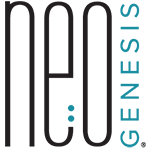By Dr. Greg Maguire, Ph.D
The enzymatic cross-linking of carbohydrates to other organic molecules, such as proteins, is called glycosylation and is an important post-translational modifications of proteins, essential for human cell signaling and metabolism. Glycation is different than glycosylation. Less commonly known is the non-enzymatic and less specific reaction called the Maillard reaction, after its discoverer Louis-Camille Maillard. This is the reaction that underlies the browning of bread. The Maillard reaction takes place in multiple steps, leading to the irreversible formation of advanced glycation end products (AGEs). In the early steps of the reaction, the sugars can react irreversibly with amino acid residues of peptides or proteins to form protein adducts or protein crosslinks. Initially this step of glycation affects the interactions of collagen with cells and extracellular matrix components. However, the most damaging effects of glycation are caused by the formation of glucose-mediated intermolecular cross-links. The cross-linking decreases the critical flexibility and permeability of the tissues and reduces cellular turnover.
In the last step, when an oxidation is involved, the products are called advanced glycation end products The formation of AGEs is a slow process that occurs physiologically in vivo, with higher accumulation of AGEs in tissues with slow renewal rates, such as the skin. AGE levels are increased in patients due to increased production, but they are also increased due to impaired excretion. In conditions such as metabolic and oxidative stress AGE accumulates more rapidly. AGE is highly destructive because it interacts with a receptor called RAGE, which then initiates a cascade of inflammatory pathways in cells. RAGE is involved in degeneration of many cells, including its critical role in many forms of neurodegeneration. New, non-invasive assessment techniques of AGE are now available. The measurement is made using skin autofluorescence.
Not only is the skin autofluorescence (SAF) a measure of AGE in the skin, but the value determined in the skin is highly correlated with that in other parts of the body. That is, the measurement of AGE accumulation in the skin can serve as a biomarker for disease states other than those in the skin, including cardiovascular disease and diabetes mellitus. Chronic kidney disease has also been recently shown to correlate with SAF. As I have said previously, the health of the skin is an important biomarker for the health of many other organs in the body.
Not surprisingly, an environmental factor that is likely to have a profound effects on AGE accumulation is diet. Studies have shown that breastfed infants, consuming few AGEs, had lower SAF intensities than formula-fed infants, a diet rich in AGEs. Meat consumption is also associated with higher AGEs, where lower SAF values have been observed for vegetarians in haemodialysis patients.
In addition to environmental factors, hereditary factors are likely to contribute to the observed AGE phenotypes as measured by SAF. Studies of twin and sibling pairs have implicated heredity as partly responsible for lens and skin fluorescence variations.
So what can we do? Reducing our consumption of sugars and simple carbohydrates is one obvious profylactive measure. Another is reducing one’s consumption of meat, and eating a diet rich in vegetables. And, because environmental (dietary) AGEs promote inflammatory mediators, leading to tissue injury, restriction of dietary AGEs will suppress these effects. This is true in the skin, as well as throughout the body. Further, because metabolic state, and oxidation are important to driving the formation of AGEs, in addition to healthy lifestyle and dietary practices, one can use a course of topically applied skin care products to promote better metabolism, increased anti-oxidative capacity, and a renormalization of the ECM in order to better prevent glycation and the formation of cross-linking and AGEs in the skin.
Do you want to learn more about NeoGenesis? Follow us on Facebook, Instagram, LinkedIn and YouTube.





